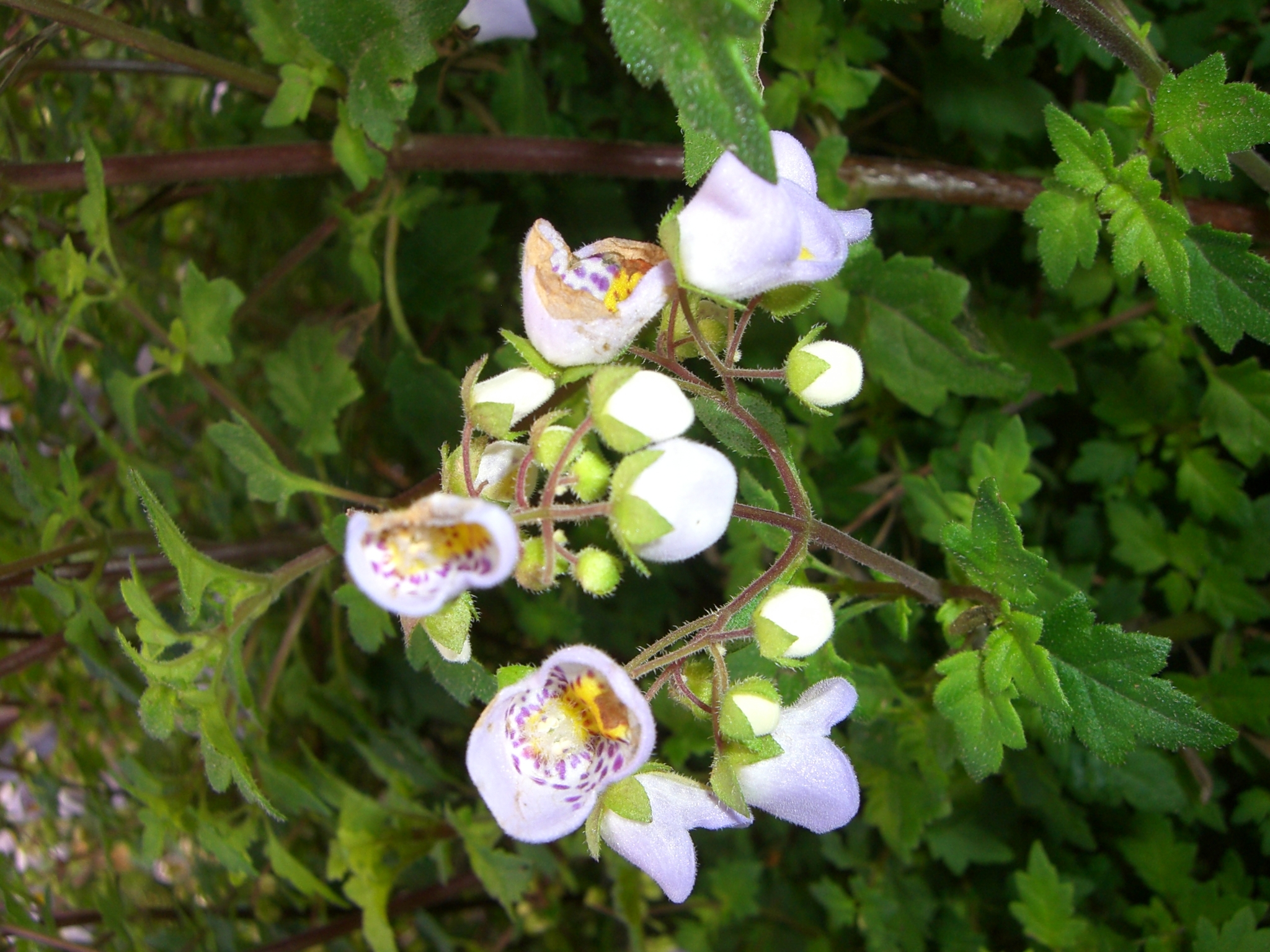
Perennial or annual herbs, subshrubs or lianes. Leaves simple, pinnatifid or pinnate, opposite or whorled; margins often toothed, sometime joined at the base. Inflorescences in paired cymes or thyrses. Flowers bisexual, 4-merous, strongly irregular. Calyx valvate. Sepals fused. Petals fused, 2-lipped; upper lip hooded, lower lip (especially in the cultivated forms) very large and saccate and ± slipper-like; inner side of lower lip usually with oil-secreting glands; often with red or brown spots. Stamens 2, rarely 3 (in some Calceolaria), filaments attached to petals; anthers basifixed; staminodes absent; nectary absent. Ovary superior to partly inferior; carpels fused, placentation axial. Stigma small or capitate or obscurely bilobed. Fruit a capsule, both loculicidal and septicidal.
Previously included in Scrophulariaceae. This treatment follows Stevens, P.F. (2001 onwards, Angiosperm Phylogeny Website).
Calceolariaceae are herbs or shrubs usually with opposite, serrate leaves. Flowers are 4-merous, usually with two stamens, no nectary, and often a strongly saccate lower lip with pads of hairs forming oil-secreting glands on the inside of the lip.
2 genera and c. 240-270 species, from Patagonia to southern Mexico.
Created by: Val Stajsic
Updated by: Val Stajsic, April 2018
